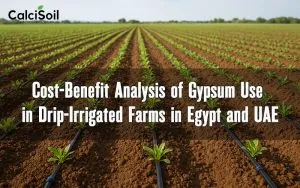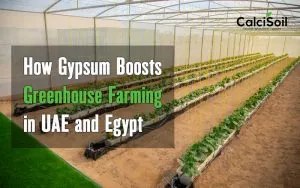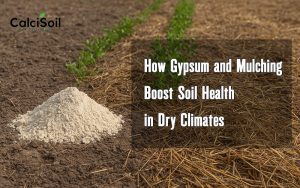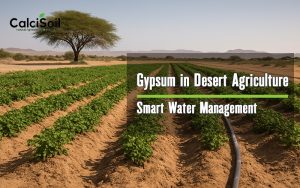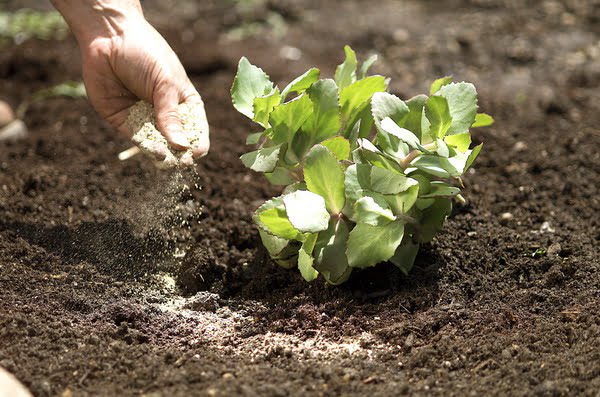
Effect of Gypsum in Reducing Aluminum Toxicity
Almost 50% of the potentially arable lands in the world are faced with the acidification problem. Use of the agricultural gypsum in the soils with the high aluminum concentration, such as the soils in lands under the tea cultivation and those near dried up swamps used in the agriculture, reduces the aluminum toxicity and promotes the growth of plant roots.
Al + SO4 AlSO4
This equation shows that toxic aluminum is replaced with aluminum sulfate, an ionic compound that has low toxicity. Moreover, the increase in the soil calcium transfers aluminum adsorbed on the surface of clay particles into the soil solution. It is noteworthy that gypsum does not have a very noticeable effect in the increase in the pH values of acidic soils.
Additionally, the calcium in gypsum can help to displace aluminum ions that are adsorbed on the surface of clay particles and transfer them into the soil solution, where they are less toxic to plants. It is important to note, however, that gypsum does not have a significant effect on increasing the pH values of acidic soils. While gypsum can help to address aluminum toxicity and promote root growth, other amendments may be needed to address soil acidity and improve soil fertility.
High magnesium content soils
The Use of Gypsum in Soils with High Magnesium Content
Soils with high magnesium content can present challenges for agricultural productivity and soil health. Magnesium, while an essential nutrient for plants, can become problematic when present in excessive amounts, as it affects soil structure and nutrient availability. To address these issues, the use of gypsum (calcium sulfate) has been studied as a soil amendment.
The chemical reaction involving magnesium and calcium in the soil can be represented as:
Soil-Mg + Ca²⁺ → Soil-Ca + Mg²⁺
This reaction highlights the exchange process where calcium replaces magnesium on soil particles. Calcium has a stronger affinity for clay particles compared to magnesium when both are present at equal concentrations. This preferential adsorption of calcium makes gypsum an effective tool for managing magnesium levels in soil.
Effects of Gypsum Application
Low Application Rates (2 t/ha):
Scientific studies have demonstrated that applying gypsum at a rate of 2 tons per hectare does not significantly alter magnesium concentrations in either surface or deep soil layers. This means that in soils where magnesium levels are not excessively high, such a low application rate of gypsum does not lead to a reduction in soil magnesium content. As a result, this application rate is considered safe and does not compromise the availability of magnesium as a nutrient for plants.High Application Rates (20 t/ha):
In soils with excessive magnesium content, a much higher application rate of gypsum, such as 20 tons per hectare, has been found effective in reducing magnesium concentrations to more desirable levels. By replacing excess magnesium with calcium, gypsum improves soil structure and mitigates the negative effects of high magnesium levels. This adjustment enhances the overall soil quality, ensuring better conditions for plant growth and root development.
Practical Implications
The effectiveness of gypsum as a soil amendment depends on the initial magnesium content of the soil and the application rate used. For soils with balanced magnesium levels, lower rates of gypsum do not pose risks to nutrient balance. However, in soils with high magnesium content, higher application rates are necessary to achieve optimal soil conditions. Proper soil testing and evaluation are essential before deciding on gypsum application rates to ensure sustainable and efficient soil management.

